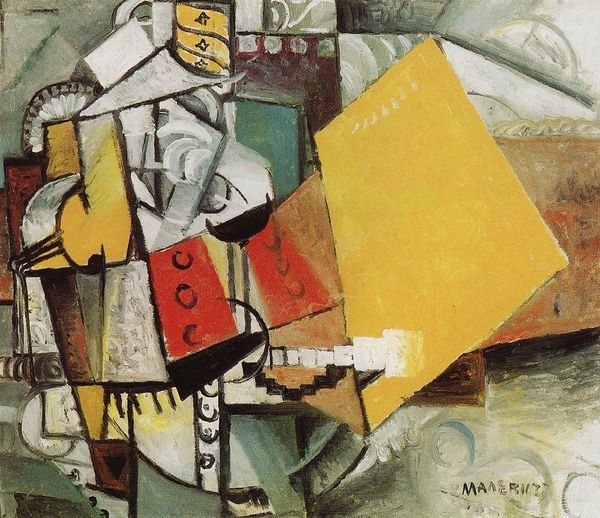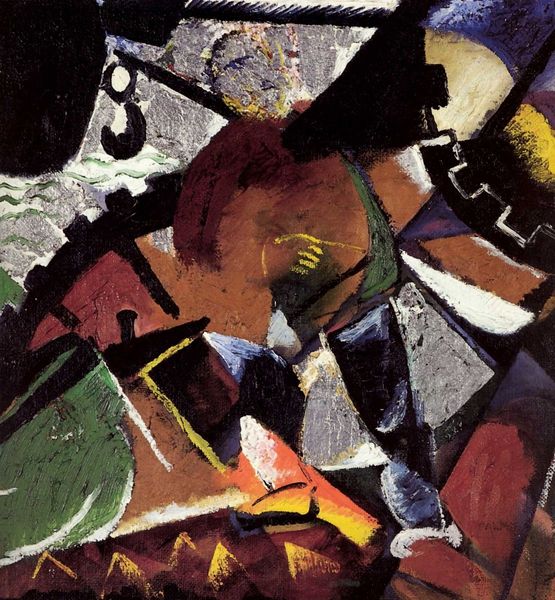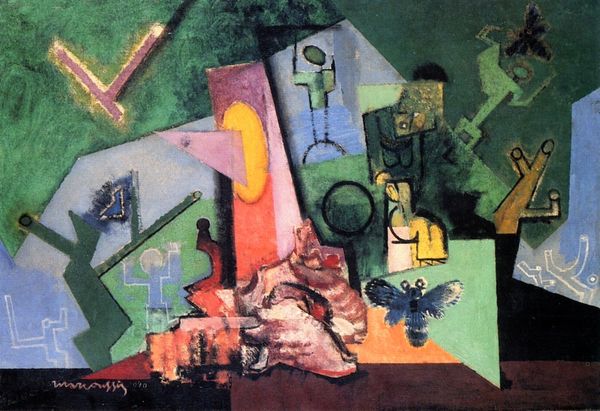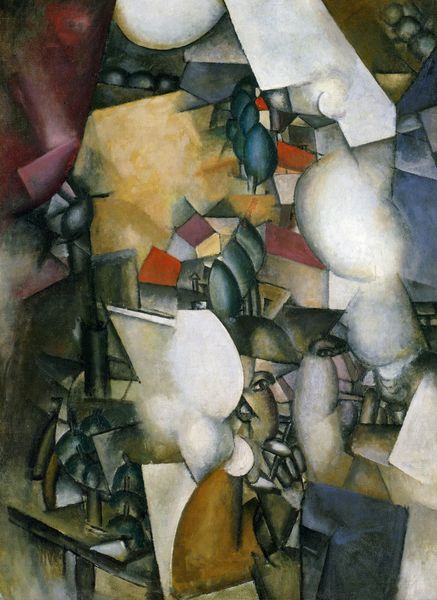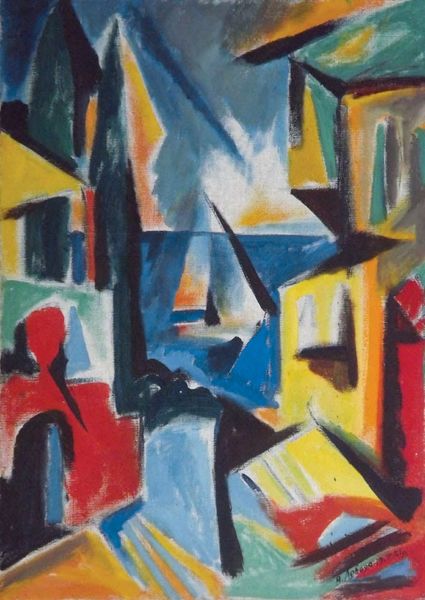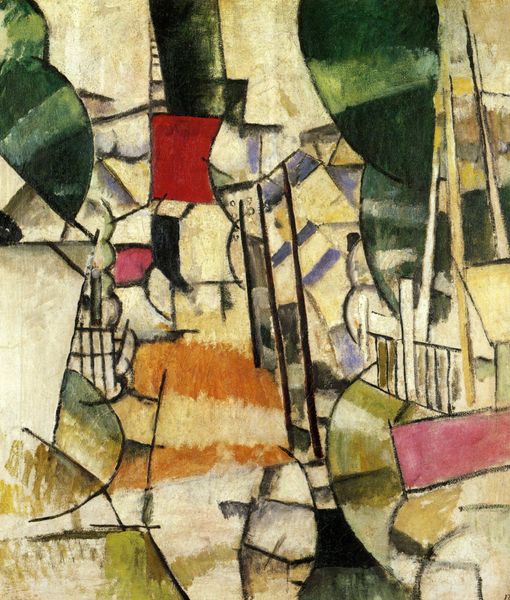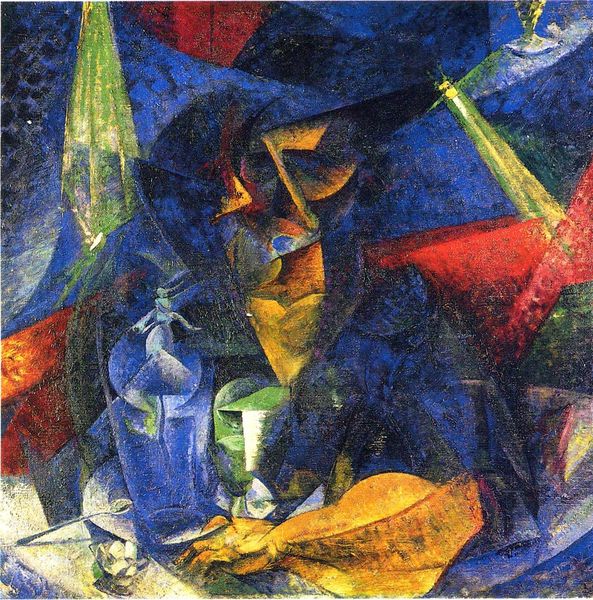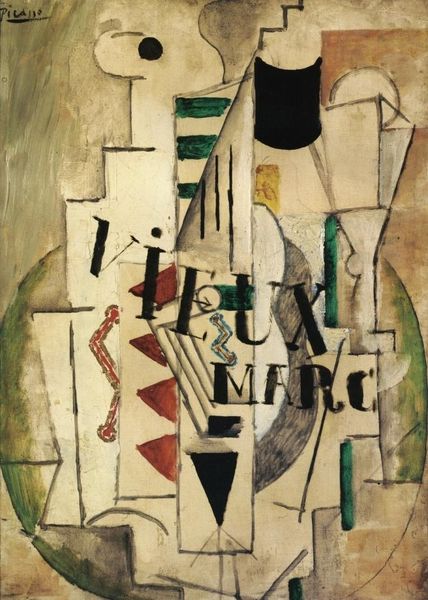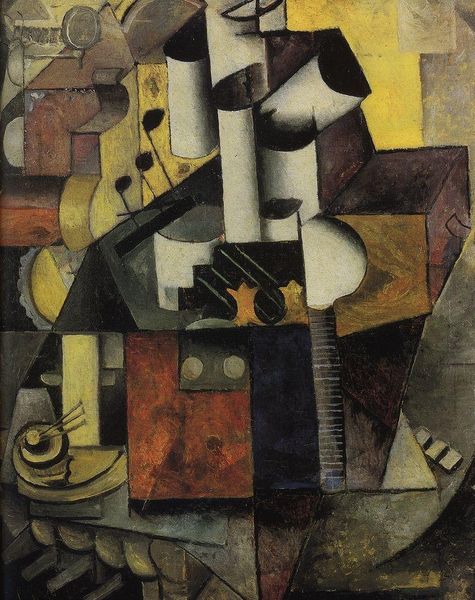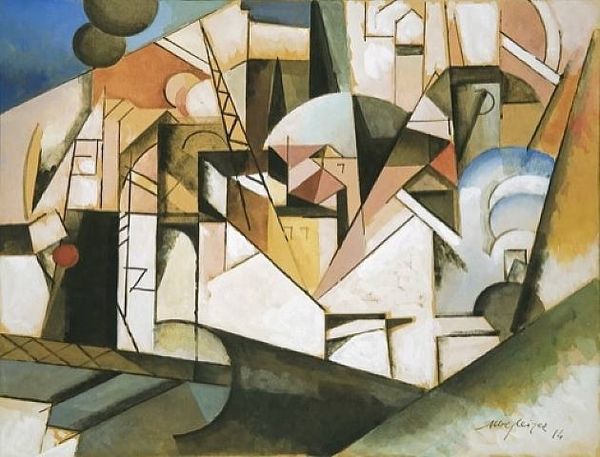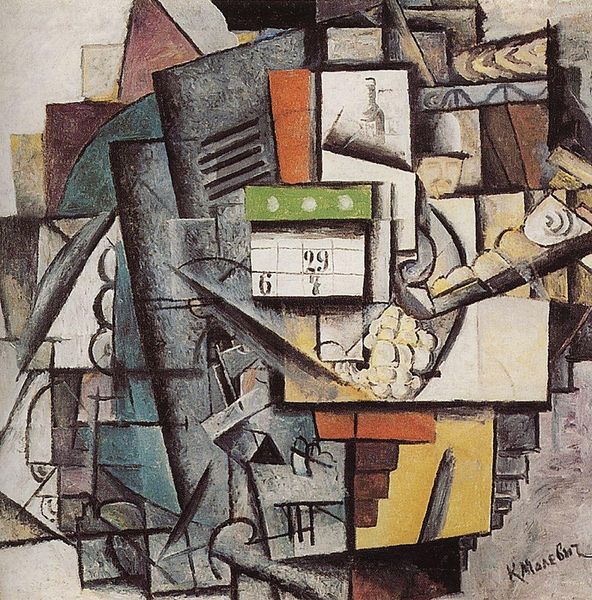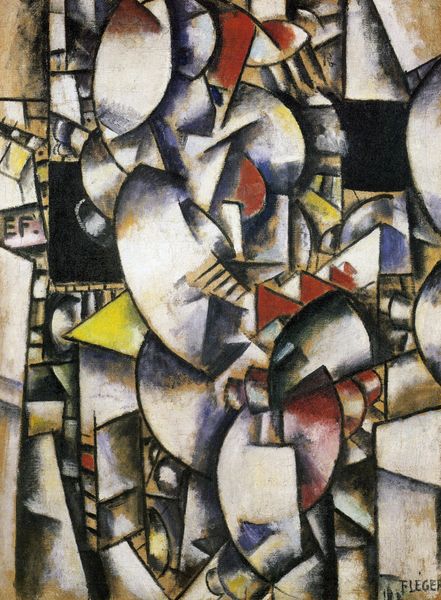
painting, oil-paint
#
painting
#
oil-paint
#
landscape
#
german-expressionism
#
figuration
#
geometric
#
expressionism
#
horse
Dimensions: 131.5 x 200 cm
Copyright: Public domain
Editor: Franz Marc’s “The Unfortunate Land of Tyrol,” painted in 1913 using oil on canvas, certainly throws a lot at you. It’s almost like a fractured fairytale landscape... there's beauty, sure, but a real sense of disquiet. How would you interpret this work, considering the time it was created? Curator: Looking at the socio-political landscape of 1913, on the eve of World War I, it's difficult not to see this “unfortunate land” as a premonition. Expressionism, and German Expressionism, in particular, was very attuned to societal anxieties. How does the fractured composition strike you in that context? Editor: It feels almost violent. The geometric shapes feel harsh, and the colours are clashing rather than harmonious. Almost like something is breaking apart. Is that a fair reading? Curator: Absolutely. Marc was deeply concerned with the fate of humanity, often using animals as symbols of innocence corrupted by the modern world. Consider those horses. Are they at peace within this landscape, or do they seem burdened, out of place? Tyrol, as a geographic space, held certain romantic connotations for Germans. What happens when that romantic ideal clashes with the brutal realities of a pre-war Europe? Editor: That tension between the ideal and reality makes the “unfortunate” aspect much clearer. He’s using that romantic imagery of landscape to show the opposite - the corruption and unease. The disrupted landscape isn't just about aesthetic choices; it’s reflecting a world on edge. Curator: Precisely! The painting then becomes less about Tyrol itself, and more about a broader critique of societal turmoil and impending disaster. What’s the role of the museum, then, do you think, in exhibiting a work like this a century later? Editor: To remind us. It's not just pretty pictures; it's a warning, preserved in oil and canvas, about the dangers of societal unrest and unchecked forces. I definitely appreciate the history more after our chat. Curator: And I was pushed to consider how the immediate emotional impact, the colours and shapes, draws viewers into engaging with the broader historical context.
Comments
No comments
Be the first to comment and join the conversation on the ultimate creative platform.
